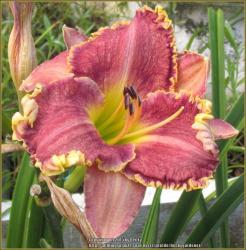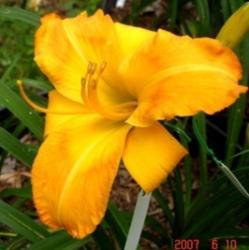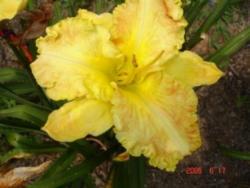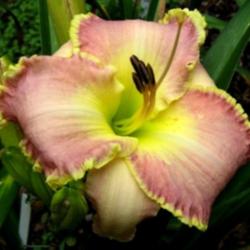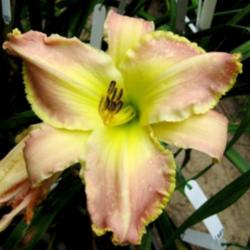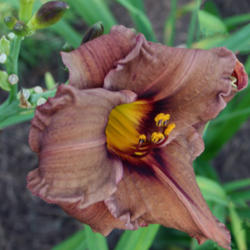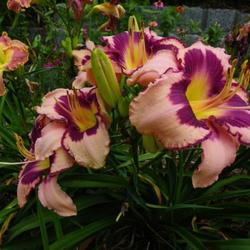Those that I have considered "muddy" over the years have tended to be those with a pink or lavender background. One time a club member visited back when I was fairly new to daylilies. She saw 'Dena Marie' growing in my garden, and commented that she loved the flower size but that the bloom had always looked muddy to her. I no longer grow it, but here in my zone 6/7 garden ( red clay soil but heavily amended) the color did look muddy. When I attended the Houston Convention in 2008, I saw 'Dena Marie' growing in a Houston area garden ( home territory in case everyone doesn't know) the color definitely looked clearer. So I've always thought that soil, temperature, climate, water, all play a factor in color, but some of it is definitely genetic.
Here are the old pictures I've saved from when Dena Marie used to grow here. Can you guess which image was taken in Texas, or can you even see any difference? (I'll put answer at bottom)
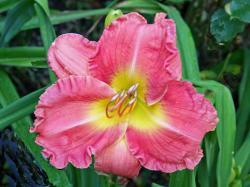
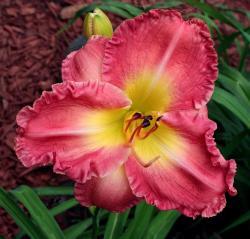
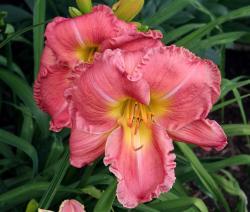
One cultivar that I had a love-hate relationship with was Curt Hanson's 'Inca Apothecary.' It definitely had brown mixed in with the pink. Some days I liked it, and other days I hated it, although it had good bloom habits. It grew here until last year. The hybridizer describes the color as "cinnamon rose blend above chartreuse throat."
Color was definitely unique, but in the end the muddiness bothered me, and it no longer grows here. Many undoubtedly love it!
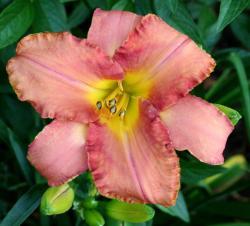
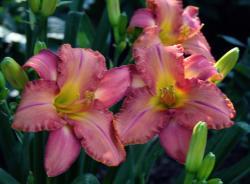
So, go figure, I find 'Old Termite' which is definitely completely mud (LOL) intriguing! I don't grow it but have admired its look in several gardens. Maybe the brown without hints of pink , at least for me, is easier on the eyes! Don't like mud in clear pinks or lavenders, but brown flowers sometimes can be intriguing!
No lavenders come to mind at the moment, but there are some plants which left here because the color was not a clean clear lavender color and it bothered me. This is just a personal preference, it probably wouldn't bother most people.
Here's an old story about muddiness..... Back in 2006, a well known hybridizer was teaching a Garden Judges II workshop at the National Convention on Long Island that I was assisting with. The garden where we were taking the classes did not have a lot of seedlings to use for the seedling evaluation part, so he selected a recently introduced cultivar at the time which was growing nearby in the garden ( which was selling for high $$ and highly sought after back then) for students to "pretend" that it was a seedling and evaluate. He went through the various attributes of the plant, commented on foliage, scapes, vigor, buds, etc. but when he got to the bloom, he mentioned that he thought the bloom color was quite muddy and that he wouldn't have introduced it. I privately thought at the time that it was mean to make such a statement about a fellow hybridizer's prize introduction, but, honestly, I've grown the plant for many years, and most days I must admit, it looks muddy to me also. The cultivar is 'Alexa Kathryn.' (Kinnebrew -J. 03) What do you think?
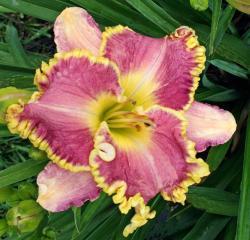
Answer from above: The Texas picture of Dena Marie is in the middle.
